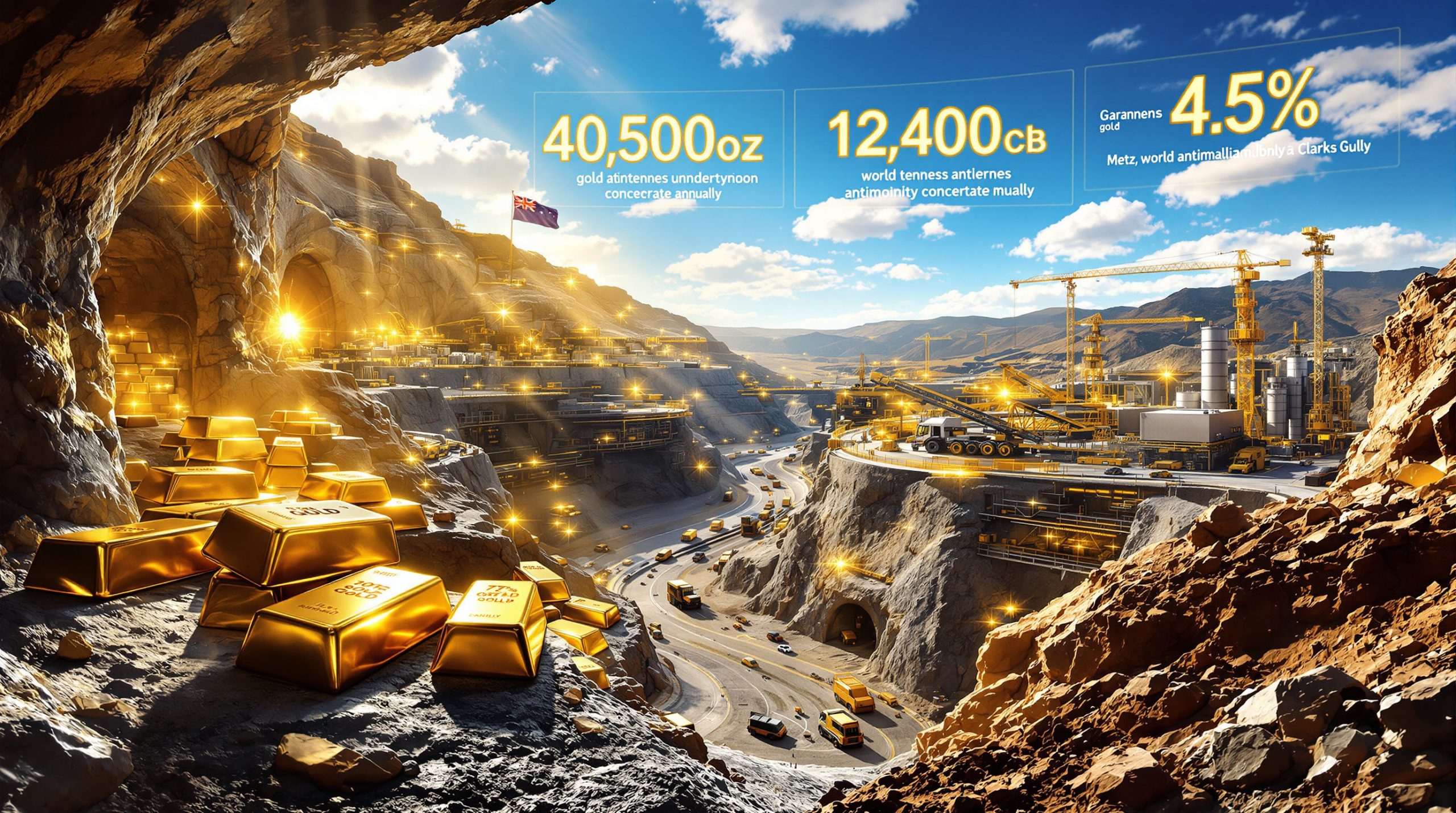What Makes Sibanye-Stillwater's South African Operations So Exceptional in 2025?
The global mining sector has faced unprecedented challenges throughout 2025, yet Sibanye-Stillwater has emerged as a standout performer, demonstrating remarkable operational excellence across its South African precious metals portfolio. The Sibanye-Stillwater South Africa platinum and gold earnings increase has been extraordinary, with the company's third-quarter results revealing significant growth that underscores both strategic positioning and operational discipline during volatile market conditions.
Group total Ebitda soared 198% to R9.9 billion from R3.3 billion in the corresponding quarter of 2024, reflecting the company's exceptional leverage to precious metals pricing dynamics. This performance demonstrates how well-positioned mining operations can capitalize on favorable market conditions while maintaining operational efficiency through modern mine planning approaches.
According to CEO Richard Stewart, who assumed leadership on October 1, 2025, the company's performance reflects both market opportunity and operational excellence. Stewart characterized the operational environment as demonstrating stability and improvement, with third-quarter results tracking toward achieving annual production guidance across all major operations.
Operational Framework Driving Performance Excellence
Sibanye-Stillwater's South African operations encompass a strategically diversified portfolio spanning both platinum group metals and gold production. The company operates four regional PGM facilities including Rustenburg (incorporating Kroondal), Marikana, and Plat Mile in South Africa, alongside the Mimosa operation in Zimbabwe.
The gold portfolio consists of five dedicated South African operations: Driefontein, Kloof, Beatrix, Cooke, and DRDGOLD. This diversification provides balanced exposure across different mineralization styles, operational depths, and geographic regions within South Africa's premier precious metals districts.
The strategic advantage of this portfolio structure becomes apparent during periods of precious metals price volatility. Each facility contributes distinct operational capabilities, from deep-level mining expertise to surface processing technologies that align with comprehensive mineral exploration fundamentals.
Why Did South African Platinum Earnings Surge by an Unprecedented 213%?
The most striking aspect of Sibanye-Stillwater's Q3 2025 performance was the dramatic 213% increase in South African PGM Ebitda to R5.0 billion, compared to R1.6 billion in the same period of 2024. This extraordinary growth reflects both favorable market dynamics and operational improvements across the company's platinum operations.
Key Performance Metrics:
| Metric | Q3 2025 | Q3 2024 | Change |
|---|---|---|---|
| SA PGM Ebitda | R5.0 billion | R1.6 billion | +213% |
| Average Basket Price (4E oz) | R32,438 | R23,909 | +36% |
| Group Total Ebitda | R9.9 billion | R3.3 billion | +198% |
Market Forces Driving PGM Price Recovery
The platinum earnings surge reflects what industry analysts describe as a confluence of market forces creating exceptional conditions for precious metals producers. Investment demand has intensified significantly as macroeconomic uncertainty drives both institutional and retail investors toward traditional safe-haven assets.
Stewart noted that the recent rally in PGM prices has been largely driven by increased investment demand and restocking activities resulting from macroeconomic uncertainty. However, he emphasised that longer-term prospects are supported by positive market fundamentals, suggesting the current performance reflects both cyclical and structural factors.
The 36% increase in average basket pricing from R23,909 to R32,438 per 4-element ounce demonstrates the significant price appreciation that has benefited South African PGM producers. However, the Sibanye-Stillwater South Africa platinum and gold earnings increase of 213% substantially exceeds the price appreciation, indicating that operational improvements have amplified the impact of favourable pricing conditions.
Operational Leverage Amplifying Market Gains
Beyond market price appreciation, Sibanye-Stillwater has implemented strategic operational enhancements that have magnified earnings growth potential. The company's systematic approach to optimising its portfolio has focused resources on the most profitable and efficient mining areas while streamlining operations across all facilities.
The mathematical relationship between the 36% price increase and 213% earnings growth reveals the significant operational leverage embedded within the company's cost structure. This leverage effect is characteristic of mature mining operations where fixed costs are spread across production volumes, allowing price increases to flow directly to profitability.
Furthermore, industry-specific factors contribute to this performance. Platinum group metals mining involves complex metallurgical processes and significant infrastructure investments, creating high barriers to entry and limited global supply flexibility. When demand increases, existing efficient producers like Sibanye-Stillwater capture disproportionate value.
What Factors Drove the Remarkable 177% Gold Earnings Increase?
South African gold operations achieved equally impressive results with Ebitda reaching R3.7 billion, representing a 177% increase from the prior year period. This performance demonstrates the company's exceptional ability to capitalise on gold price analysis trends whilst maintaining operational discipline across multiple mining facilities.
Twelve-Quarter Transformation Journey
The most remarkable aspect of the gold operations performance is the sustained growth trajectory spanning 12 consecutive quarters. From a modest baseline of R371 million Ebitda in Q4 2022, the operations achieved a tenfold increase to R3.7 billion by Q3 2025.
Gold Operations Performance Evolution:
- Q4 2022: R371 million Ebitda (baseline)
- Q2 2024: R1,500 million Ebitda (4x growth)
- Q3 2025: R3,700 million Ebitda (10x growth)
This progression represents one of the most dramatic operational turnarounds documented in the global mining sector. It demonstrates how systematic operational improvements can compound over multiple reporting periods to create substantial value.
Strategic Portfolio Optimisation
The sustained earnings growth reflects deliberate strategic decisions to optimise the gold portfolio through targeted investments and operational improvements. The company has focused capital allocation on the most productive areas while implementing cost reduction initiatives across all operations.
Specific infrastructure investments have supported this transformation, including winder system upgrades, metallurgical plant refurbishments, and facility improvements at key operations like Beatrix in South Africa's Free State province. These investments enhance both immediate operational efficiency and long-term production sustainability.
The DRDGOLD operation represents a particularly significant component of this growth story, with capital expenditure increasing 165% year-over-year to R833 million. This investment focuses on Phase 2 expansion of the Far West Gold Recoveries on the West Rand and recommencement of operations at the Ergo tailings storage facility on the East Rand.
How Do Strategic Capital Investments Support Long-Term Growth?
Sibanye-Stillwater's capital allocation strategy demonstrates a balanced approach between maintaining current operational excellence and positioning for future growth opportunities. Third-quarter 2025 gold capital expenditure (excluding DRDGOLD) increased 7% year-over-year to R1 billion, while sustaining capital rose 11% to R202 million.
Infrastructure Modernisation Priorities
The company's capital investment priorities reflect a comprehensive approach to operational optimisation across multiple operational categories. These investments support both the current sustainability transformation initiatives and long-term operational viability.
Critical Infrastructure Upgrades:
- Winder system enhancements for improved vertical transport efficiency
- Metallurgical plant refurbishment to optimise processing capabilities
- Facility improvements at key operations including Beatrix
- Underground infrastructure development for long-term access
Expansion Capital Allocation:
- 94% of DRDGOLD capex allocated to Far West Gold Recoveries Phase 2 expansion
- Ergo tailings storage facility recommencement on the East Rand
- Surface processing capacity optimisation across multiple operations
Return on Investment Framework
The capital expenditure increases reflect strategic decisions based on rigorous return on investment analysis across the portfolio. Sustaining capital investments focus on maintaining current production capabilities while ensuring operational safety and regulatory compliance.
Expansion capital targets specific opportunities where additional investment can generate superior returns through increased production capacity, improved metallurgical recovery, or enhanced operational efficiency. The DRDGOLD Phase 2 expansion exemplifies this approach, targeting significant additional gold recovery from existing tailings resources.
Investment in infrastructure modernisation also addresses the unique challenges of South African deep-level mining. Ageing infrastructure requires ongoing capital investment to maintain operational integrity and worker safety standards.
What Role Does Renewable Energy Play in Operational Strategy?
Renewable energy integration has emerged as a critical component of Sibanye-Stillwater's operational strategy, delivering both cost savings and environmental benefits whilst enhancing long-term operational sustainability. The company achieved significant milestones in renewable energy deployment during 2025.
Renewable Energy Performance Metrics
Two major renewable energy projects generated 99 GWh of clean energy during 2025, delivering R45 million in direct cost savings whilst avoiding 107,000 tonnes of CO₂-equivalent emissions. This performance demonstrates the practical benefits of sustainable energy integration in large-scale mining operations.
Renewable Energy Project Performance:
| Project | Capacity | Energy Generated | Cost Savings | CO₂ Avoided |
|---|---|---|---|---|
| Castle Wind Farm | 89 MW | 140 GWh | R62 million | 151 ktCO₂e |
| Springbok Solar | 75 MW contracted | Included in combined totals | Included in R45 million | Included in 107 ktCO₂e |
Long-Term Sustainability Targets
The current 164 MW of renewable energy capacity represents substantial progress toward the company's 600 MW long-term target, supporting the broader goal of achieving carbon neutrality by 2040. This timeline reflects realistic implementation schedules whilst demonstrating commitment to environmental stewardship.
The Castle Wind Farm, commissioned in March 2025 with 89 MW capacity, has already generated 140 GWh of energy. It has avoided 151 ktCO₂e emissions whilst delivering R62 million in cost savings, validating the economic and environmental benefits of renewable energy integration in mining operations.
The Springbok Solar project involves a 150 MW facility where Sibanye-Stillwater secures 75 MW capacity through a decade-long agreement. This approach demonstrates how mining companies can participate in renewable energy development without requiring full ownership of generation assets.
Competitive Advantages Through Energy Independence
Renewable energy integration provides multiple strategic advantages beyond environmental benefits. Energy cost reduction directly improves operational margins, particularly important for energy-intensive mining and processing operations.
Energy supply security represents another critical advantage, as renewable energy projects reduce dependence on national grid reliability and pricing volatility. South African mining operations have historically faced challenges with grid stability, making on-site generation strategically valuable.
The regulatory environment increasingly favours operations with strong environmental performance metrics. Renewable energy integration positions Sibanye-Stillwater advantageously for future environmental compliance requirements and stakeholder expectations.
How Do Global Operations Complement South African Excellence?
Whilst South African operations drive core precious metals performance, Sibanye-Stillwater maintains strategic international assets that provide portfolio diversification and exposure to different commodity markets and regulatory environments.
European Operations Transition
The Sandouville nickel refinery in France is transitioning to care and maintenance status after incurring a $7 million third-quarter Ebitda loss. This transition reflects strategic portfolio optimisation, with management focusing resources on the most profitable operations whilst managing legacy assets responsibly.
Selected downstream process areas remain operational to facilitate nickel recovery from diluted solutions generated during the ramp-down process. A voluntary redundancy plan for 90 employees has been agreed with unions and approved by French authorities, with additional headcount reduction negotiations ongoing.
The Keliber lithium project in Finland continues construction activities, including process electrification and installation of instrumentation and communications systems. Project capex of R13.1 billion remains within the revised capital forecast of R15.9 billion, excluding capitalised interest and exploration costs.
Australian Asset Performance
The Century zinc operation in Australia demonstrates the challenges facing base metals producers during the current market cycle. Third-quarter production decreased 10% to 24,000 tonnes whilst sales declined 16% to 17,000 tonnes.
All-in sustaining costs increased 11% to R35,539 per tonne, whilst Ebitda declined 12% to R486 million. This performance reflects both operational challenges and weaker zinc market conditions compared to precious metals markets.
The Mt Lyell copper project feasibility study is expected to be completed before year-end. This represents potential future growth opportunities in the copper sector as global electrification drives increased demand for copper products.
What Market Conditions Support Continued Precious Metals Growth?
Current global economic conditions create a favourable environment for precious metals demand, with multiple macroeconomic factors supporting continued price strength and investment demand across both gold and platinum markets.
Macroeconomic Uncertainty Drivers
Stewart emphasised that the uncertain macroeconomic and sociopolitical outlook, combined with disruptive global changes, provides strong support for gold as the perennial safe-haven asset. These conditions typically drive institutional and retail investment toward precious metals as portfolio hedges.
Geopolitical tensions, currency volatility, and concerns about traditional financial system stability continue supporting precious metals demand. Central bank policies and inflation concerns create additional demand drivers, particularly for gold as a store of value.
Key Market Support Factors:
- Macroeconomic uncertainty driving safe-haven demand
- Geopolitical tensions supporting defensive asset allocation
- Currency volatility encouraging precious metals diversification
- Supply chain disruptions affecting industrial metals availability
Supply-Demand Fundamental Analysis
Beyond cyclical demand factors, structural supply constraints support longer-term precious metals pricing. Limited new mine development and operational challenges at existing facilities globally create ongoing supply-side pressure across both gold and platinum markets.
Industrial demand for platinum continues growing, particularly in hydrogen technologies and automotive applications. The global transition toward hydrogen energy systems creates new demand sources for platinum group metals. However, automotive electrification maintains demand for traditional catalytic converter applications.
Investment demand patterns show increasing institutional allocation toward precious metals as portfolio diversifiers. Retail investment through exchange-traded funds and direct purchases provides additional demand support during economic uncertainty periods.
How Does Leadership Transition Impact Strategic Direction?
Richard Stewart's assumption of CEO responsibilities on October 1, 2025, represents a significant leadership transition for Sibanye-Stillwater during a period of exceptional operational performance. His initial communications emphasise strategic continuity whilst acknowledging ongoing market challenges.
Strategic Vision Under New Leadership
Stewart's first official quarterly update maintains focus on operational excellence, sustainable development, and strategic portfolio optimisation. The emphasis on renewable energy integration and operational efficiency improvements suggests continued commitment to long-term value creation rather than short-term profit maximisation.
The new CEO's commentary acknowledges the challenging macroeconomic environment and commodity price volatility. Nevertheless, he expresses confidence in the company's positioning for continued strong performance through 2025 and into 2026.
Leadership Priorities:
- Operational excellence across all facilities
- Sustainable development and environmental stewardship
- Strategic portfolio optimisation
- Renewable energy integration acceleration
- Long-term value creation focus
Continuity in Strategic Execution
The leadership transition appears designed to maintain strategic momentum rather than implement dramatic changes to successful operational approaches. Stewart's background and early communications suggest experienced leadership focused on building upon existing strengths.
The timing of the leadership change, coinciding with exceptional financial performance, provides the new CEO with strong operational foundations. This creates financial flexibility to pursue long-term strategic initiatives whilst managing near-term market volatility.
What Investment Implications Emerge from This Exceptional Performance?
Sibanye-Stillwater's remarkable 2025 performance creates compelling investment considerations for both institutional and retail investors seeking exposure to precious metals markets through operational excellence and strategic positioning.
Valuation Framework Analysis
The company's exceptional earnings leverage to precious metals prices creates both opportunity and risk for investors. The 213% platinum earnings increase and 177% gold earnings growth demonstrate significant upside potential during favourable market conditions.
However, this leverage effect works in both directions, meaning earnings could decline rapidly if precious metals prices weaken. Investors must consider their risk tolerance for commodity price volatility when evaluating investment opportunities.
The company's diversified asset base provides some protection against single-commodity exposure. Furthermore, operational improvements demonstrate management's ability to create value beyond simple price appreciation through effective South African beneficiation strategies.
Risk Assessment Considerations
Key Investment Risks:
- Precious metals price volatility affecting earnings leverage
- Operational risks associated with deep-level South African mining
- Regulatory challenges in South African mining environment
- Currency exchange rate impacts on rand-denominated operations
- Capital intensity requirements for ongoing operations
Mitigating Factors:
- Diversified precious metals portfolio reducing single-commodity risk
- Demonstrated operational excellence and cost management
- Renewable energy integration reducing operational costs
- Strategic portfolio optimisation focusing on profitable operations
- Strong balance sheet supporting investment flexibility
Long-Term Value Creation Potential
The combination of favourable market positioning, operational excellence, and strategic vision suggests potential for sustained value creation across multiple commodity cycles. The company's renewable energy initiatives and infrastructure investments position operations for long-term competitiveness.
The 12-quarter transformation in gold operations demonstrates management's ability to create sustained value through operational improvements. This approach relies less on favourable market conditions and more on systematic enhancement of operational capabilities.
Positioning for Sustained Excellence in Global Mining
Sibanye-Stillwater's exceptional 2025 performance in South African precious metals operations reflects a compelling combination of favourable market conditions, strategic operational improvements, and effective capital allocation that positions the company for continued success.
The ability to achieve 213% platinum earnings growth and 177% gold earnings increases demonstrates the exceptional leverage available to well-positioned precious metals producers during favourable market cycles. More importantly, the sustained 12-quarter transformation journey proves management's capability to create value through operational excellence.
The integration of renewable energy initiatives, strategic portfolio optimisation, and continued infrastructure investment creates multiple pathways for long-term value creation beyond simple commodity price exposure. The company's 600 MW renewable energy target and carbon neutrality by 2040 goal position operations advantageously for evolving environmental requirements.
As global economic uncertainty continues supporting precious metals demand, the Sibanye-Stillwater South Africa platinum and gold earnings increase exemplifies how diversified South African operations provide a robust foundation for capitalising on market opportunities whilst maintaining operational resilience across various economic conditions.
The successful leadership transition to Richard Stewart, combined with demonstrated operational excellence and strategic positioning, creates compelling prospects for sustained performance excellence in the global mining sector. For investors and industry observers, Sibanye-Stillwater's transformation represents a valuable case study in effective mining company management during volatile market periods.
According to recent quarterly financial results, the company's exceptional performance has been driven by both operational improvements and favourable market conditions. Additionally, the Public Investment Corporation's increased stake demonstrates institutional confidence in the company's strategic direction and long-term value creation potential.
Investment Disclaimer: This analysis is for informational purposes only and should not be construed as investment advice. Precious metals mining investments carry significant risks including commodity price volatility, operational challenges, and regulatory uncertainties. Investors should conduct thorough due diligence and consider their risk tolerance before making investment decisions.
Want to Discover the Next Sibanye-Stillwater Before the Market Does?
Discovery Alert's proprietary Discovery IQ model instantly identifies significant ASX mineral discoveries like the transformative platinum and gold finds that can deliver exceptional returns. With real-time alerts on major mineral discoveries powered by advanced AI technology, subscribers gain the market edge needed to capitalise on breakthrough announcements before broader market recognition drives up valuations.




